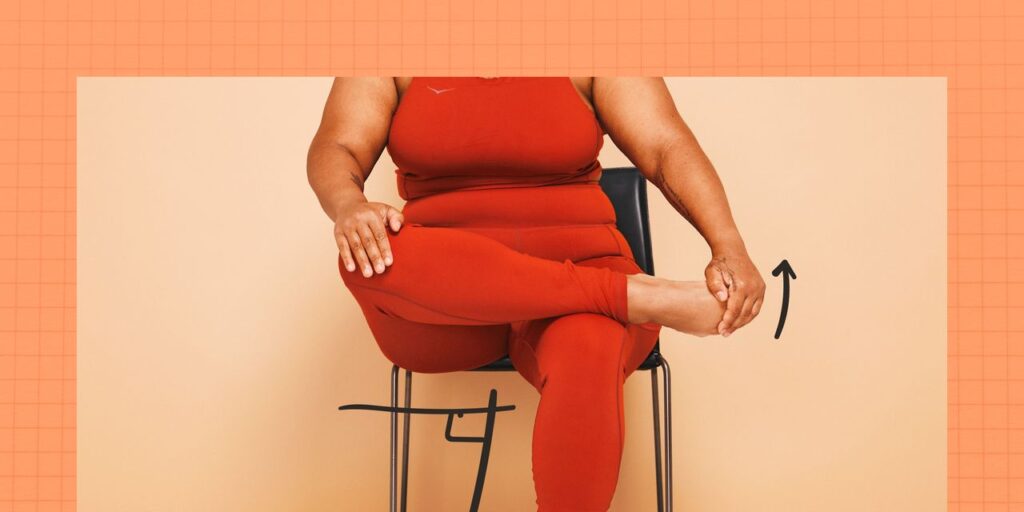Tight, achy shins can mess with your exercise routine…and whatever else is on your agenda, like strolling with your pup or climbing stairs. But with a seated shin stretch, you can deliver sweet relief to your barking legs—and all you need is a chair to get it done.
We tapped Femi Betiku, PT, DPT, CSCS, a physical therapist and Pilates instructor in Westchester, New York, to understand what causes shin tightness in the first place, the ideal way to stretch this area, and the perks of doing so. We also got his input on a simple-yet-seriously effective seated shin stretch you can try today. Ready for quick relief? Here’s the at-home solution your achy legs have been begging for.
Why do shins get tight?
First, let’s get clear on what your shins are. Technically, the shin is a bone called the tibia, which extends from below your knee to the ankle. A muscle, known as the tibialis anterior, runs right along the tibia, at the front part of your lower leg.
When you feel tightness in this area, it’s usually the result of the tibialis anterior getting overworked, which causes tiny fibers of that muscle to start pulling on the bone, Dr. Betiku explains. This, in turn, leads to inflammation in the area. Now, the inflammation itself isn’t a problem. “It’s okay if it’s inflamed,” Dr. Betiku says—as long as it’s a temporary thing and the muscle fibers go on to heal. But when that doesn’t happen, and the inflammation just sticks around, then that’s what can bring on the sensation of lingering tightness and/or pain, he explains. In fact, there’s a name for this: shin splints, or medial tibial stress syndrome in medicalspeak.
Shin splints are common among runners, especially those who just ramped up their training, since that can force the tibialis anterior into overdrive. “Also it can happen with people who just started a new walking program,” Dr. Betiku adds. Walking or running uphill, or on uneven or hard surfaces, can also overwork the tibialis anterior, triggering shin tightness and pain.
People with flat feet and those with hip tightness can be more prone to shin splints, as can those with tightness or weakness in the calves or tibialis posterior (the muscle on the backside of the shin bone), Dr. Betiku adds. That’s because strength or mobility issues with the opposing muscle groups can cause the tibialis anterior to once again take on too much stress.
What are the benefits of stretching tight shins?
Tight shins can be a serious drag on your workout routine and daily functioning. Fortunately, stretching can “go a very, very long way” in mitigating some of that discomfort, Dr. Betiku says.
How’s that? Well, when you overuse the tibialis anterior, the muscle becomes chronically shortened, Dr. Betiku explains. This contributes to feelings of stiffness and pain. Good news is, you can reverse this shortening with stretching, which lengthens the muscle and gives it “the relief it needs,” Dr. Betiku says. “You’re passively helping [the muscle] to just loosen up a little bit.”


